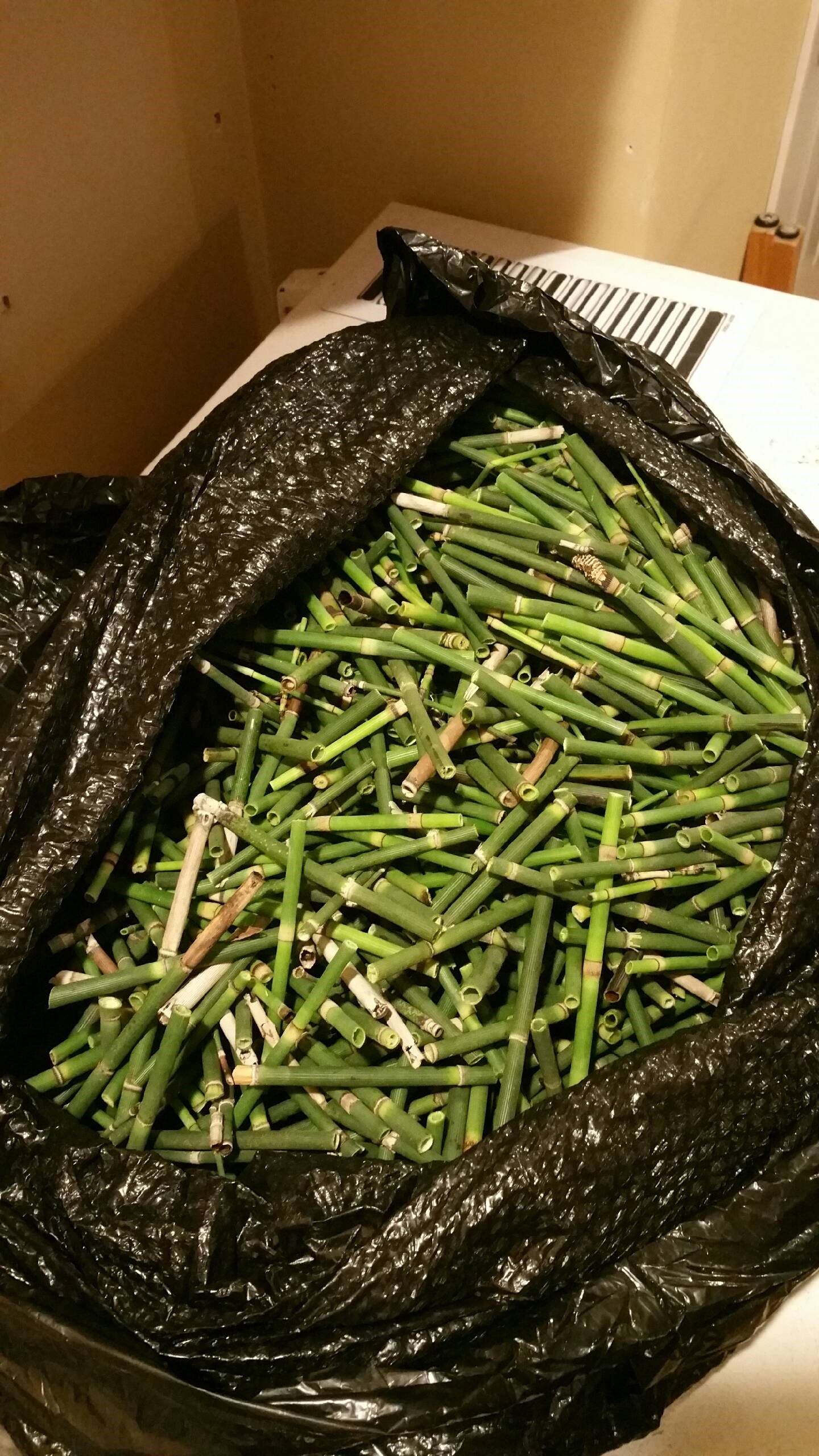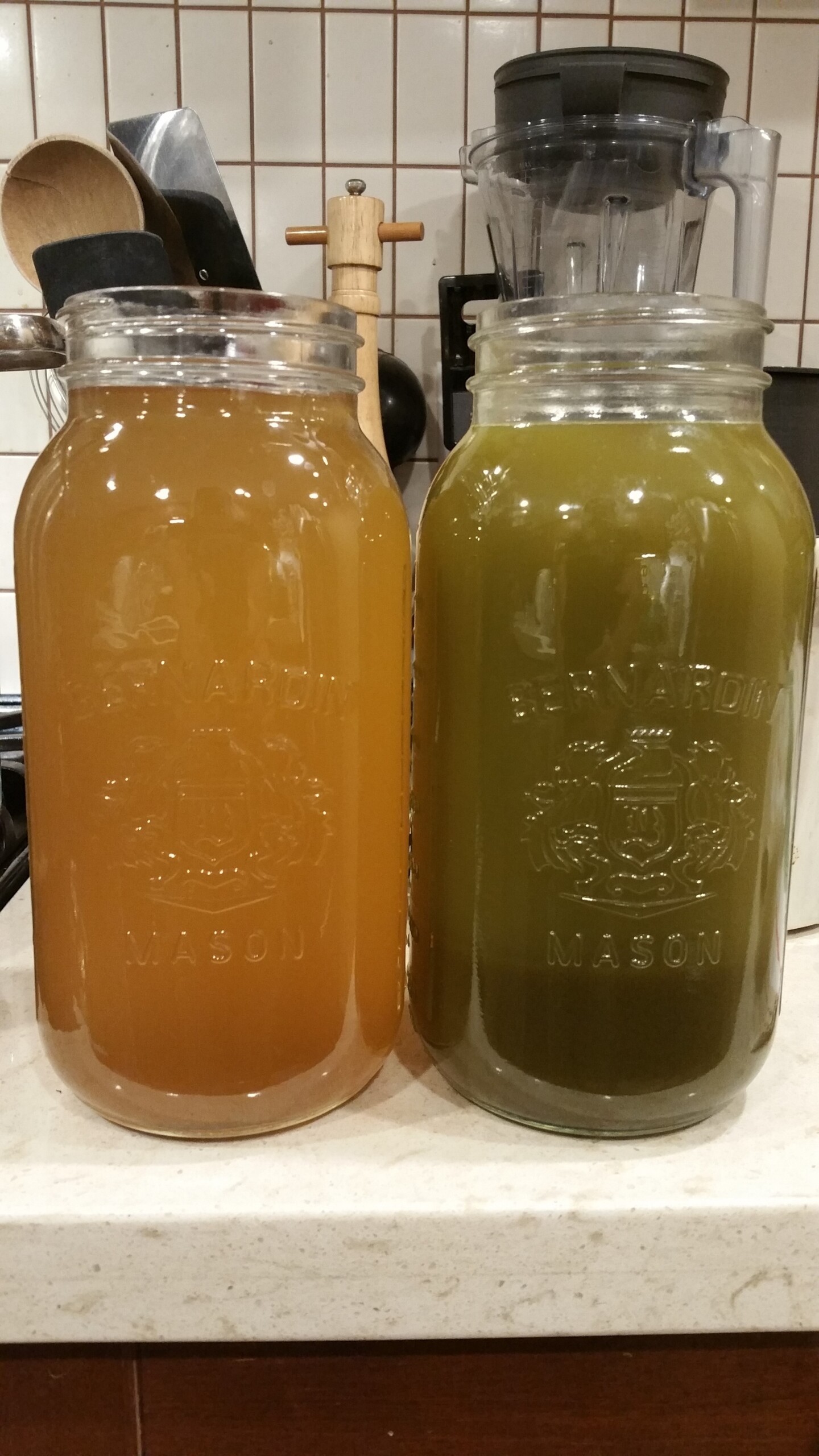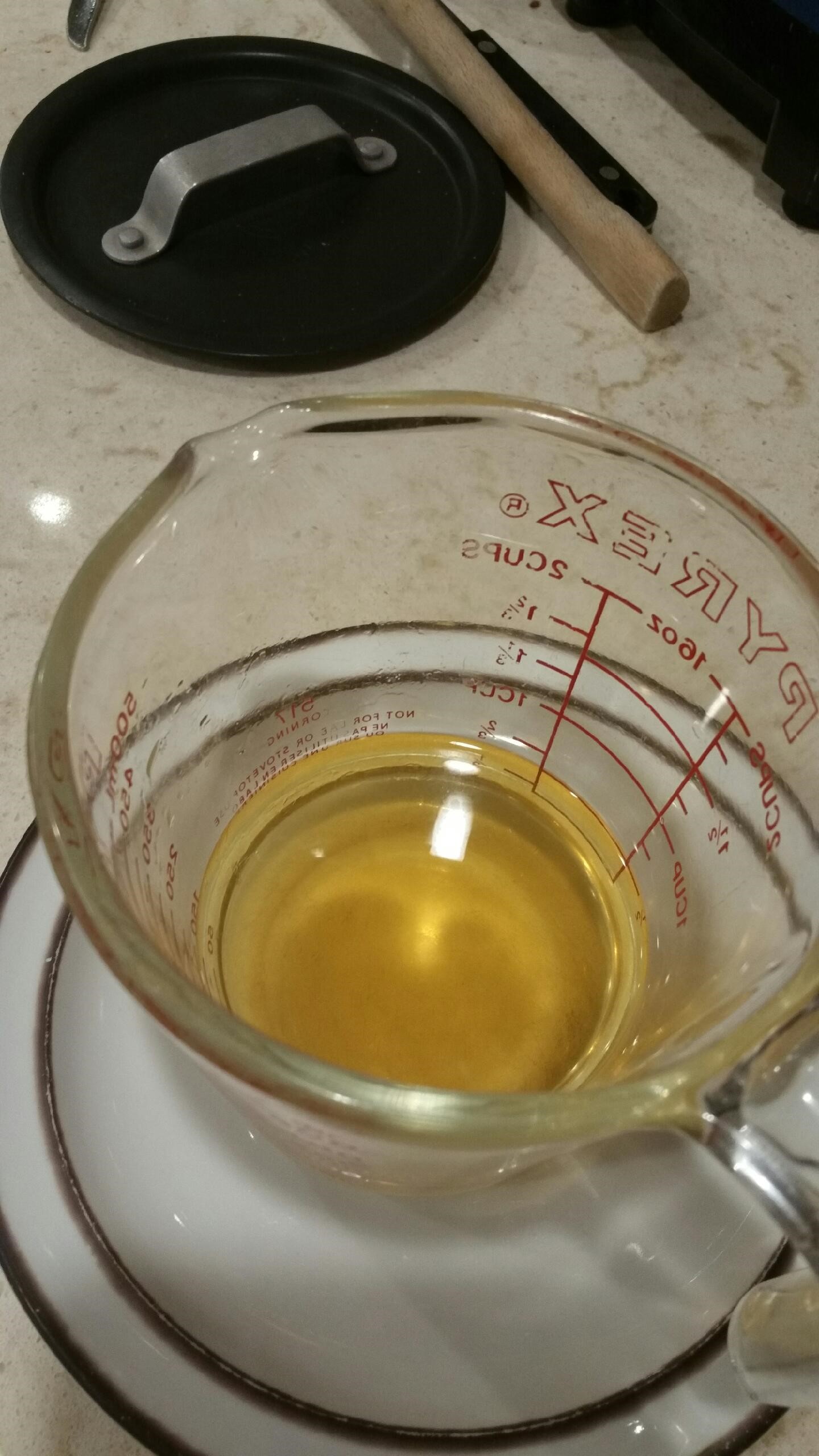Stronger and Healthier Plants
This page is dedicated to plants and other things that can help keep our plants strong and healthy. The horsetail recipe is the first one on the list.
- Horsetail
- TBA
- TBA
 Horsetail Plant, Information and Recipe [Latin: Equisetum arvense]
Horsetail Plant, Information and Recipe [Latin: Equisetum arvense]
By Mike C.
Benefits: antioxidant, antimicrobial, antibacterial, anti-fungal, astringent, and anti-inflammatory properties.
A moment to talk about Silica as relates to Horsetail:
Silica (aka Silicon dioxide) is most commonly found in nature as quartz and in various living organisms. Silica is a main constituent of sand; and (thus) in the manufacture of glass. Horsetail is a unique and highly concentrated, naturally occurring source of Silica.
In Humans/animals:
Historical records of Human use of Horsetail date back to the bronze age – Greeks and Romans used it (often to stop bleeding). Silica is fundamentally important in the building, and the maintenance of healthy connective tissues, cartilage, muscle, skin, tendons, and bone. Horsetail not only contains silica, but it also contains potassium and various antioxidants.
Horsetail can be consumed orally, or used topically. Consuming horsetail has the effect of increasing absorption of bone building minerals such as calcium. Horsetail consumption benefits are: healthier skin, hair, teeth, and bones. It’s also beneficial for arthritic conditions +++.
In terrestrial plants:
Silica is similarly important to plants as it is to humans/animals… On a cellular level, silica increases the very strength of plant cell walls. Higher concentrations of bio-available silica (silicic acid) provide greater resistance to the fruiting bodies of various fungi (which technically inject themselves into the plant) and predatory diseases/bugs. High levels of silicic acid within plant tissues also increase plant yield – best ‘fruit’ or pulp; in some commercial crops, greater silica content has increased yield by as much as 35%+!
Doesn’t that sound GREAT?!!!
Horsetail Preparations/Consumption & Uses:
I make several different Horsetail preparations: Horsetail tea, ferment, and my latest are a tea/pulp ferment, and a tea/pulp non-ferment cut 50% with Apple Cider vinegar. I will list the recipes/how to at the bottom.
Horsetail/silica increases plant tolerance to drought, frost, and yes… as you mentioned: blight. And due to the increased hardness of the plant epidermal cells, predatory insects like aphids, caterpillars, mites, and thrips, leaf-miners, and spittle-bugs ALL find the plants less hospitable/have less success in attacking them.
Health:
I’ve only just begun to use horsetail tea – as a drink. I haven’t consumed enough of it/regularly to comment about ‘dose’ yet. Currently, I’m drinking a cup/250 ml of tea; warming it slightly on the stove. it has a pleasant, somewhat sweet taste, with an aftertaste/aroma that’s perhaps faintly reminiscent of maple syrup; difficult to place it.
I’ve also begun to use horsetail as a topical application – mainly as a hair rinse (fine hair, long, tangle-prone), or as a leave-in conditioner. I use the straight tea as a rinse and my own modified recipe as leave-in (combined with some coconut oil). Apparently, it can also be made into creams and tinctures and applied directly to the skin. I haven’t attempted these (yet), but I have an interest.
NOTE: When using as hair rinse: Caution… it’s SUPER slippery! If like me you have a tub/shower combination the tub will feel like it’s oiled!
Garden:
Horsetail tea/ferment’s benefits are as an anti-fungal, and as a soil enhancer; it can be applied as a foliar (spray) and/or as a root drench. There are 2 popular versions of horsetail tea for the garden [I’m experimenting with a 3rd this year].
In the garden, I use or have used Horsetail tea extract, and ferment. The extract or tea, I initially used as a foliar (spray) application. This was an effort to control powdery mildew & Botrytis on my late-season cannabis plants. I found that the tea wasn’t potent enough for what I was dealing with/my plants, and so I made a ferment – which is considerably stronger. This worked much better, but I found that it negatively affected the flavor and smell of the crop I was cultivating. For you/your crops, YMMV, but for me/my flowers, once they began to bloom, the foliar application ceased, and I shifted to a root-drench of the ferment. This approach has netted the results I was seeking.
My observations in the garden: Increased tolerance to powdery mildew and Botrytis. Broadleaf, low-growing plants, such as various squash and pumpkins are notorious for becoming infected with PM. Horsetail is of benefit for any plant with broad leaves, which keep significant moisture beneath their canopy.
Harvesting Horsetail:
From what I’ve read, horsetail is at its peak, here in Ontario, around the end of July. Harvest horsetail with a pair of scissors which you don’t care about (it will dull the shit out of them), or a pair of sharp garden sheers (I have and am partial to Fiskar trimming shears with micro-tip). Whatever you use, they must be very sharp and precise to cut through the silica-laden & drinking straw like pulp of the Horsetail. I typically harvest between 2 and 5 lbs at a time.
Extractions:
There are 2 types of Horsetail extractions, which I’ve used prior, and am quite familiar with. This year I decided to more fully use my materials and have concocted a 3rd type, but can’t yet speak to its benefits or limitations.
I chop the horsetail into 2-3 inch lengths [yeah I’m old school, and metric isn’t my go-to for length measurement]. The purpose of shortening the ‘straws’ is to make them more manageable for the next stage – extraction. After chopping the Horsetail into sections, I cover the horsetail (sort of – it wants to float) with water. Ratios are between 1 and 3 liters of water to 1 lb of Horsetail. [Look at Mike mixing metric volume with Imperial weight and length measures] 🙂 I believe in using enough water to cover the horsetail vs. say the EXACT measures. My goal is to have as much silica extracted into the finished tea as possible.

Water:
I use distilled water or r/o because pure water is effectively a solvent. When water is stripped of all mineral and organic content, it more effectively takes up the constituents (from the Horsetail) that we care about; thus we’ve effectively created more ‘room’ in the water for it to hold onto the silica, etc. In the end, we arrive at a greater saturation of silica in our finished product. *we also eliminate various undesirables such as fluoride and chlorine/chloramine (the town I’m in uses Chloramine, and it’s FAR more persistent/difficult to filter out than chlorine).
After the horsetail is chopped, and in a pot with water (I use an 8 liter. stainless steel stock pot), I put a lid on, bring the solution to a boil – JUST, then I reduce the heat and simmer for 30 minutes. After 30 minutes have passed I allow the tea to rest and cool – I do this with the intent of making it easier to handle, and in hopes of extracting maximal silica; as the Horsetail solids remain in suspension longer.
*CAVEAT: I admit that by boiling the water, I COULD be denaturing or killing off beneficial components. This is why I JUST bring it to a boil and then reduce the heat.
At this point, we have finished the tea. It’s quite transparent vs cloudy and is a golden yellow in colour. At this point, we have several options on how to proceed. The ‘tea’ can be used, as is, to drink, or as a hair rinse, OR it can be fermented (a process that takes 10-14 days). I do recommend straining the tea – although, due to its fibrous nature, Horsetail pulp neither turns mushy nor disintegrates significantly into the water.
I’ve not attempted to shelf-stabilize Horsetail tea extract (yet), but presume it would need to be done the same as other preserves [sterile equipment (metal and glass, no plastics nor wood) in contact with the preserve; minimum 150 F temperature at the time of jarring]. And I ASSume, that as with other preserves, a deep-water pressure-canning device nets the best potential outcomes. Canning oversights can lead to much spoilage – ask me how I know.
The Ferment:
Take the finished tea produced and pour it into glass jar/s; I use 1.9L Bernardin, wide-mouth canning jars. The lids remain off, and the jars are covered with a loosely woven towel, or burlap – something that will allow breathing, but will not allow debris, nor inquisitive insects inside. A warm spot nets a speedier arrival at the fermented result. You can tell it’s done when it has a white ‘Santa’s beard’ culture on the surface; for me, that’s usually 10 days.
NOTE: The stuff begins to smell around the 4-7 day mark, depending on how warm your fermenting environment is. So unless you’re into huffing plant-farts [I don’t judge/fetish shame 😉 ], you’ll likely want it in an area away from your daily activities. Whether used as a root drench or as a foliar application the typical mix rate is 10:1 water to ferment. NOTE: I failed to mention the non-ferment ratio 5:1… so the ferment is assumed to be roughly 2x the potency!
The Latest Experimental Version:
So… I had all of this plant matter left over after making the tea. It looked like it still had goodness in it. I considered composting it but decided on another route: I strained off 50% of my total finished tea and kept that for immediate use. I then decanted the same volume (tea extracted) of freshly filtered water. Next, I strained all of the plant matter and began batch-processing the fresh water and plant matter in my Vitamix blender- set to super high speed.
NOTE: I have multiple blender ‘hoppers… and knowing how much silica there is in horsetail I figured it would dull the blade of the blender significantly – so I used the shitiest one I have ;). I blenderized that stuff until it was smoothie-esq. I added it back to the pot. Re-boiled, then re-simmered for 30min, allowed it to cool, then strained off the pulp [I top dressed my cannabis plants with the pulp].
The resultant liquid was nearly opaque and VERY green. I elected to ferment the vast majority, but 1/5th I saved with the intent of using in for hair-rinse.
For the hair rinse, I cut @ a rate of 50% with Apple Cider Vinegar. …And let me tell you… there was SO much goodness left in that stuff! The green hair rinse is GREAT stuff! The smell is more than acceptable, and it’s even better at de-tangling than is the straight up tea; when I combined the green extraction with some coconut oil (and left in) hair and beard… no exaggeration… never has felt this healthy!
The Experimental Ferment:
The ferment product JUST finished a few days ago. I decided it was silly to have 2 different extractions. so combined them together. Immediately after I’d combined them, I applied this new ferment as a root drench on my own cannabis plants @ a ratio of 10 parts water to 1 part ferment. My plan is to apply every 10 days for the next 30 days. After having observed my plants (they LOVE it!) I applied the same to one of my students’ plants over the weekend. Be warned tho… It stinks! … something on the order of that smell when farmers are spraying their fields… so don’t say I didn’t warn you! The smell was gone in 24h. By contrast, the plain tea ferment – still stinky, but not nearly as intense.
Depending on what this autumn brings (we’ve all heard rumblings about stuff going on) I’ll share samples from my garden; and your palates can decide if the new fermented extraction is a success 😉
All the best,
Mike C.
PS:
I’ve read about Comfrey teas and extractions, but haven’t made one.
I HAVE made Stinging Nettle tea. That’s so simple… fill a bucket 50% with stinging nettle (use thick long gloves/clothing to harvest). Fill with water until the nettle is covered. Allow it to rot for 30 days. Be warned… the bucket is now tainted. Talk about STINK! Your neighbors might not want to come near that side of your yard, once the ferment is fully in the process. The finished product is strained off and cut 20:1 water to Stinging Nettle tea. That noted, at full strength, it’s an amazing non-discriminatory herbicide! The solution has SO much Nitrogen in it, that it burns most plants up within 1 afternoon. Apply it on a day with BRIGHT sun, and it acts even faster! If you’re someone who believes in “no till” gardening, then THIS might be the lowest effort garden-prep ever!
You can put stakes into the ground, and a string-line, and (using a pump action garden sprayer) spray the area you want for a bed. Re-apply if your extraction demonstrates to be weak, or if there are weeds that are hearty. The best part… you’ve fertilized your soil… naturally! Wait for a rain or two and you can plant tender seedlings into that soil. They will LOVE the Nettles!
Horsetail Toothpaste
Source: Danu of Ireland
¼ cup coconut oil, softened/liquid
1 tsp bicarbonate soda/baking soda
½ tsp activated charcoal
1-2 tsp powdered horsetail (silica so good for hair and nails)
2-3 drops of an essential oil
- Put coconut oil in a small bowl. Add soda, charcoal, and horsetail.
- Mix well then add your favourite essential oil, such as peppermint.
- Mix well and put in a small glass jar for your own personal use.
- Just dip your toothbrush in and brush away.



